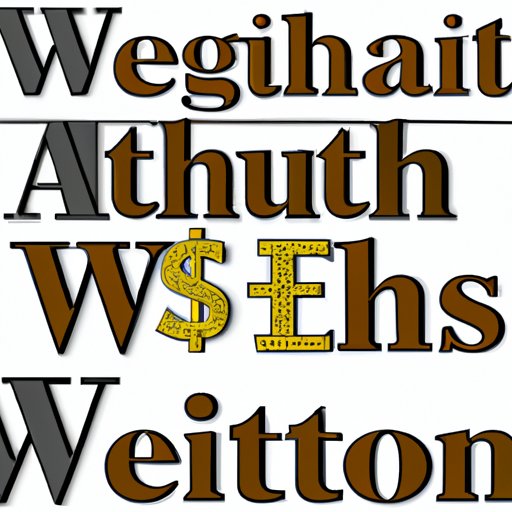
How Much Money Does the U.S. Have?
Money is the lifeblood of any economy, and the United States, as one of the world’s largest economies, has a massive amount of wealth in circulation. In this article, we explore just how much money the U.S. has, how it is distributed, and what it means for the country’s economy. Whether you’re an economics student or simply interested in the topic, read on to learn more.
The Surprising Amount of Money in U.S. Circulation: A Comprehensive Analysis
As of June 2021, there was approximately $2.11 trillion in U.S. circulation, according to the Federal Reserve. This includes paper currency and coins held by the public, as well as deposits held at banks and other financial institutions. This is a large sum by any measure, and it is not evenly distributed across the population. The top 1% of wealthiest Americans hold over 15 times more than the bottom 50%.
How Many Dollars Does the U.S. Economy Really Hold?
The U.S. has the world’s largest economy, with a nominal GDP of over $22 trillion. However, some of this money is held offshore in tax havens and the global market. As of 2021, the U.S. has approximately $128 trillion in total wealth, which includes real estate, stocks, bonds, and other assets. This means that the U.S. holds around 18% of the world’s wealth, despite having less than 5% of the global population.
Understanding the National Debt: A Look at the U.S.’s Financial Standing
The national debt is the total amount of money owed by the government to its creditors, including foreign governments and investors. As of July 2021, the U.S. national debt was approximately $28.5 trillion, which is roughly 106% of the country’s GDP. This high debt-to-GDP ratio is a concern for some economists, who worry that it may lead to inflation or even a debt crisis if the government is unable to repay its debts.
Breaking Down the Federal Reserve: The Source of U.S. Wealth
The Federal Reserve is the central bank of the United States and is responsible for setting monetary policy. It serves as the banker to the U.S. government, commercial banks, and foreign central banks. The Federal Reserve’s actions can significantly impact the U.S. economy, including the value of the U.S. dollar, interest rates, and inflation. The U.S. government’s wealth comes predominantly from income and payroll taxes, as well as revenue from corporate taxes and tariffs.
From Cash to Cryptocurrency: A Discussion of the Various Forms of Money in the U.S.
The U.S. uses several forms of currency, including paper bills, coins, credit cards, and electronic transfers. Cryptocurrencies, such as Bitcoin and Ethereum, have gained popularity in recent years and present new ways to exchange value. While these alternative currencies are not yet widely accepted, many people see them as the future of money.
U.S. Funding in 2021: Examining the Budget and Allocated Funds
The U.S. government’s budget is funded primarily through taxes and borrowing. The largest portions of the budget go to Social Security, national defense, and Medicare, while the remainder covers various other programs, such as education, transportation, and housing. The COVID-19 pandemic has significantly impacted government spending and led to increased borrowing to fund stimulus programs and other relief measures.
What Happens When We Print Too Much Money? The Truth About Inflation in the U.S.
Inflation occurs when the supply of money increases more quickly than the production of goods and services, leading to a decline in the value of money. Printing too much money can cause inflation rates to rise, and in extreme cases, result in hyperinflation, which can be devastating to the economy and society. The Federal Reserve monitors inflation closely and adjusts monetary policy to manage its impact.
Conclusion
The U.S. has a vast amount of money in circulation, but it also faces significant national debt and economic challenges. The Federal Reserve and other policymakers have a crucial role to play in maintaining economic stability and ensuring the country’s long-term financial health. As the world continues to evolve and new technologies emerge, the U.S. monetary system will undoubtedly continue to adapt and change.




